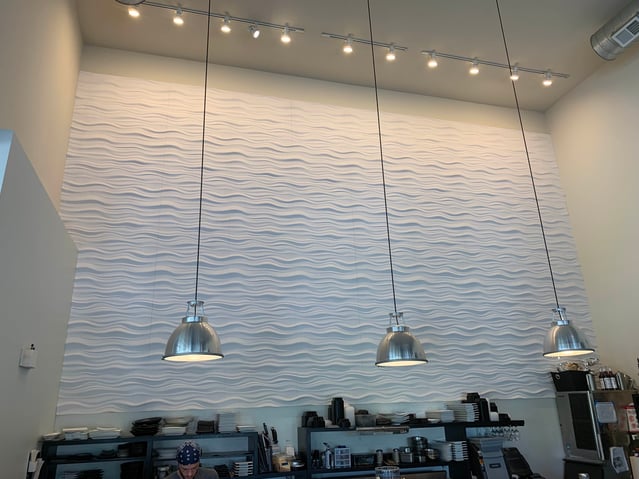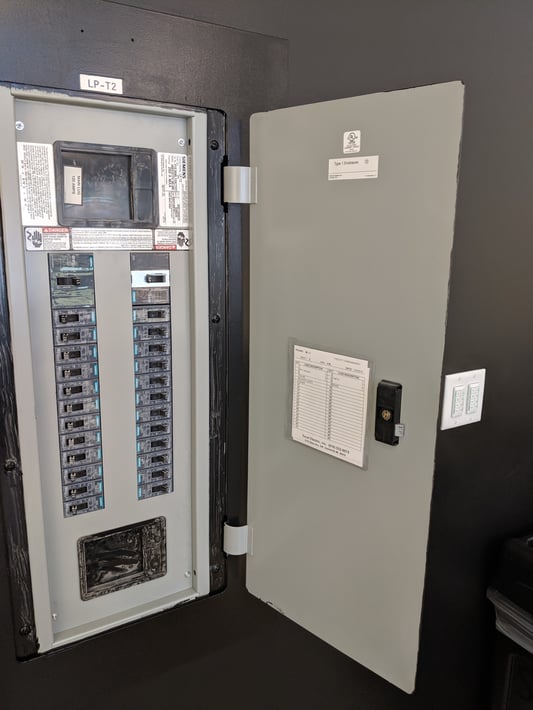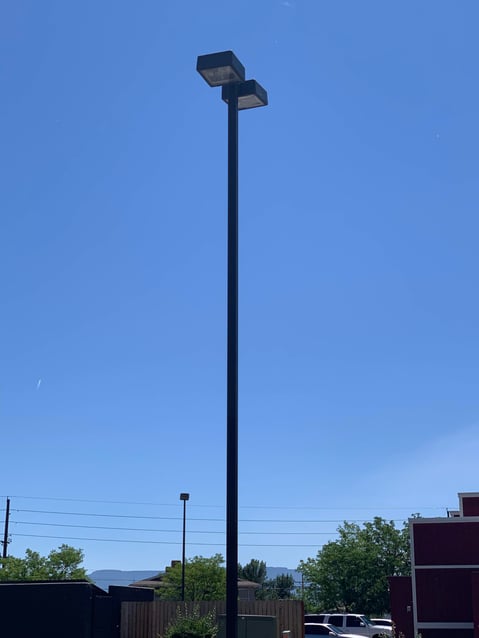How to Troubleshoot Important Dunkin' Kitchen Equipment
Work at Dunkin'? Here are troubleshooting tips for espresso machines, TurboChef ovens, and blenders to avoid equipment downtime and extra repair...
Restaurant electrical maintenance keeps energy flowing so business can run smoothly (and safely). Get troubleshooting tips on electricity and lighting now!
Welcome to another 86 Repairs Guide! In this series, we provide valuable troubleshooting, preventative maintenance, and warranty information on the equipment and infrastructure found in your restaurant. We hope this information will help you and your team become more informed about repairs and maintenance (R&M)—and save you time and money along the way.
Most people don’t find themselves in the hospitality industry because of their interest in managing R&M. Shocking, right?
But you don’t have to be amped about R&M to understand the basics of core components vital to restaurant operations—like the electricity that keeps the business running.
In this Guide, we’ll teach you how to conduct yourself when your restaurant’s power is on the fritz.

Here’s a refresher if your memory of high school science class is a little foggy: electricity is created from a flow of charged electrons through wire. The resulting energy then travels to power appliances.
Interior restaurant electrical systems usually start at the breaker panel. Depending on the electrical design of a restaurant, panels can be used for different areas or different functions: for example, one panel could be solely for an HVAC system, whereas another might be connected to the wall outlets in the kitchen.
Once electricity leaves a breaker panel, it’s distributed in a circuit. Almost always, the circuit leads to an outlet, which distributes power to the plugged-in appliance.
Restaurant electrical maintenance ensures that energy continues flowing properly so every element of the business runs smoothly and safely. No power means no HVAC, no lighting, and no refrigeration—making it nearly impossible to run a restaurant to code.
The electric expenses for a restaurant depend on local rates, the size of the building, and overall usage. A 250-seat fine dining restaurant open for lunch and dinner service will have a much higher electric bill than a sandwich shop that’s only open for lunch in the same town.
Emergency electrical work is another story:
To discover more average invoice costs and first-time fix rates for the equipment and infrastructure found in restaurants, get The State of Repairs! It’s the only resource available for restaurant operators to benchmark their R&M expenses.
In our other Guides, we’ve included preventative maintenance for restaurants to help owners and operators be proactive to limit the downtime and expenses associated with emergency services.
However, preventative maintenance doesn’t really exist for this infrastructure! Unfortunately, when restaurant electrical maintenance is needed, it’s always in reaction to something happening at that moment.
But if the power’s not quite right at your restaurant, use these troubleshooting tips before you start seeking help from an electrician.
If an appliance at your restaurant isn’t getting power, first figure out if the issue is with the electricity or the appliance itself. To check this, use the phone charger test:
If the issue is related to electricity, you’ll want to look for the closest GFCI outlet. Even if the unit wasn’t plugged into a GFCI outlet, there could be one located upstream on the same circuit.

How can you troubleshoot electrical circuits if your breaker panel won’t cooperate? Take these steps to see if you can get it back on your side:
If you toggle a breaker off and then back on, but it changes or turns off immediately:
To determine if the issue stems from an individual appliance or the number of units on the circuit,
If you toggle a breaker and it immediately turns back off, even with all lights off and all appliances unplugged, the breaker itself may be worn and needs to be replaced. This can happen if it’s already been toggled one too many times—it likely became too sensitive to the current. Call an electrician to replace it.
When you’re working with breaker panels, be on the lookout for excessively warm temperatures or a burning scent. While it’s normal for breakers to be warm to the touch, anything beyond that should be considered an emergency.
If you observe a burning smell, feel hot breakers, or see smoke coming from the breaker panel,
Any outlets that are hot to the touch, smell scorched, or have smoke coming through them should be replaced immediately. Contact an electrician to get this done safely.
Be on the lookout for scorch marks around the plugs in your outlets, as well as any plugs that might have melted. This is a huge indicator of being at risk for an electrical fire. If you spot these issues,
Troubleshooting the lighting throughout your restaurant is a bit more intensive than general electrical checks but worth the extra steps before contacting an electrician for service.
Before you begin, remember: if you’re testing a light fixture, always use a brand new bulb before you move deeper into troubleshooting!
Fluorescent lights are commonly found overhead in high-visibility areas, like kitchens. If these lights go out and still won’t turn back on after the bulbs have been replaced, you might have an issue with the ballast in the fixture. To avoid the problem moving forward, call a technician and consider converting the fixture to LED.
If more than one of your fluorescent light fixtures isn’t working within the same space, it’s likely a breaker issue. See the section on Troubleshooting breaker panels to see if the associated breaker is tripping or malfunctioning.
When you have LED bulbs in your restaurant, be advised that these frequently misbehave when they’re linked to dimmer switches. Dimmers work by sending less power to the bulb to temper the level of brightness it exudes, but some of these electrical frequencies don’t interact properly.
So, if you’re using a dimmer switch and seeing the light flicker rapidly, you either need to replace the switch or the bulb. Both of them need to be compatible with dimmable LEDs in order to work correctly!

Keep shining a light on your business by ensuring your exterior lights are timed properly. Most restaurant exterior lights are connected to a timer that will be located somewhere inside the building.
You might run into some issues with your exterior lighting when the clocks move back or forward. Most timers don’t automatically adjust, so they’ll be operating too late or too early if they aren’t reprogrammed manually.
If your exterior lights still aren’t working after reprogramming the timer,
Unfortunately, your restaurant’s electrical infrastructure is only going to be covered under warranty if it’s within a newly constructed building. Always pay attention to your general contractor’s warranty to see what’s covered and for how long—it’s in your best interest to use this protection whenever possible to avoid out-of-pocket expenses.
Outlets, breakers, and any other part of an electrical circuit in your restaurant must be replaced by a licensed electrician. Your team could cause serious damage to the building—and themselves—if they try to do this without professional help. It’s a small price to pay to keep everyone safe.
However, parts replacement for restaurant lighting can easily be handled in-house. It’s simple to find lightbulbs online or in-store, remove a burnt-out bulb, and screw the new part back in. Just look at the ends of your bulbs to verify the specifications before you buy any replacements.
Fluorescent bulbs might be a bit more tricky, but just turn the bulb about 90° until you feel it stop. At that point, you should be able to pull the bulb straight down out of the fixture. Take the same approach to replace the bulb: lift it straight into the fixture, then turn it 90° until you feel it lock into place.
Don’t be dim—restaurant maintenance is required for your business to stay up and running. When you notice a burnt-out bulb, scorched scents, or blistering hot breakers, it’s in the best interest of your business, your customers, and your staff to address it immediately.
By troubleshooting common electrical issues and replacing bulbs in-house, you may be able to avoid spending money on an unnecessary electrician visit. Now isn’t that a bright idea? 💡
Work at Dunkin'? Here are troubleshooting tips for espresso machines, TurboChef ovens, and blenders to avoid equipment downtime and extra repair...
Work at Wendy's? Here are troubleshooting tips for Frosty machines, lemonade bubblers, and grills to avoid equipment downtime and extra repair...
Hey, McDonald's employees! Get troubleshooting tips for deep fryers, grills, and espresso machines to avoid equipment downtime and extra repair...
GET OUR MONTHLY NEWSLETTER
Each quarter, we break down common restaurant R&M issues, share company announcements and spotlight industry change makers. Get free advice and updates in your inbox to resolve issues before equipment breaks down on you.